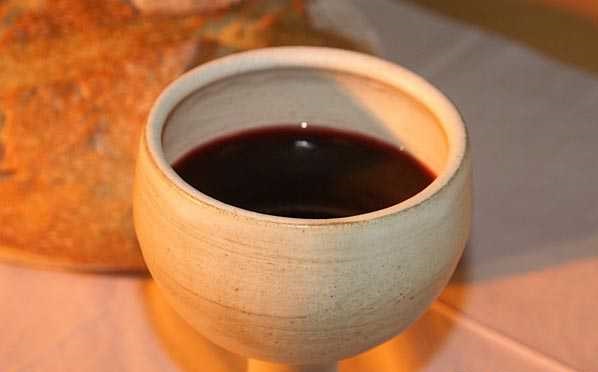O taste and see that the Lord is good; happy are those who take refuge in him.
-Psalm 34(33):8
 On Sunday, May 16, 2010, I received Communion for the first time in almost a year. I had been going through the Rite of Christian Initiation for Adults (RCIA), the year-long catechism class for adults who are being baptised, confirmed, or (like me) received from another Christian denomination into the Roman Catholic Church. When I was finally received into the Church on Ascension Sunday and received Communion as a Catholic for the first time, let me tell you, that Eucharist tasted good.
On Sunday, May 16, 2010, I received Communion for the first time in almost a year. I had been going through the Rite of Christian Initiation for Adults (RCIA), the year-long catechism class for adults who are being baptised, confirmed, or (like me) received from another Christian denomination into the Roman Catholic Church. When I was finally received into the Church on Ascension Sunday and received Communion as a Catholic for the first time, let me tell you, that Eucharist tasted good.
For the past three years, I’ve received Communion at a variety of Catholic churches, and I’ve noticed something unusual: it makes a difference for me what form the bread and wine take.
For example, communion wafers I’ve experienced range from delicate, melt-on-your-tongue and tasteless to robust, crunchy and flavourful. The first makes room for the spiritual union between Christ and communicant, as the consecrated host practically dissolves onto the tongue. The second draws attention to the physicality of the Incarnation, to the union between Christ and communicant through shared human flesh.
The greatest variety of experience, though, has been with communion wine:
Strong vs. sweet: Sometimes the Blood in the chalice is as strong and dark as port. Sometimes it is ruby red and sweet. The two provide a different spiritual experience. The first reminds me of the violence of Christ shedding his blood. Strong wine speaks to me of my responsibility to shed my blood just as violently if asked. Sweet wine, on the other hand, speaks to me of grace. It reminds me of an alternate translation of the verse at the top of this post – ‘taste and see that the Lord is sweet’. Its sweetness reminds me of the sweetness of God’s Word: ‘How sweet are your words to my taste, sweeter than honey to my mouth!’ (Psalm 119[118]:103).
Red vs. white: Occasionally I’ve been thrown off by white wine used instead of red. My reaction the first time I experienced this phenomenon was to ask (silently), ‘What, is this the plasma of Christ?’ Even though white wine technically counts for the purposes of consecration, using white wine instead of red weakens the visual symbolic link between wine and Blood.
Bread and wine vs. bread alone: Speaking of weakening the symbolic significance, I am definitely on the side of providing the entire congregation with the opportunity of receiving both the Body and the Blood. The old custom, still sometimes followed, of providing only the host to the people, and reserving the chalice to the priest, is still sometimes prudent – for example, during disease epidemics – but it ought not to be the default if the fullness of the symbolism is to be preserved. For the Eucharist is not simply medicine for the body and soul, to be taken in whatever form is easiest. It is the symbol (and more) of the death of Christ, whose Body was broken and whose Blood was shed, and it does a disservice to the Christian to deny him or her that symbol in all its glory in the name of convenience.
We often speak of the effects of music or visual art on the liturgy and the spiritual life of the Christian. I would suggest that those who are in charge of selecting the elements to be consecrated for Communion might also consider the aesthetic effects of the materials they choose on the spiritual life of the Christian. Red vs. white, sweet vs. strong, delicate vs. robust – each communicates something different about the experience of Christ’s sacrifice to the communicant. Pastors, ask yourselves: which aspect of the goodness of the Lord does your congregation need to taste?
Cole Matson is a second-year PhD student in the Institute for Theology, Imagination & the Arts, researching the Eucharist as a model for communion-building in the theatre. He is the Guest Contributions Editor for Transpositions.
_________________
Image credit: Ian Britton @ FreeFoto.com. Licensed under Creative Commons Attribution-Noncommercial-No Derivative Works 3.0 License.






What a great, simple, yet not so simple article. I’ve recently begun to think that thinking of art theologically is backwards. We should, instead, think of theology artistically. The bible begins not just with God, but with a creative, actively creating God. Theology begins with art.
Joe